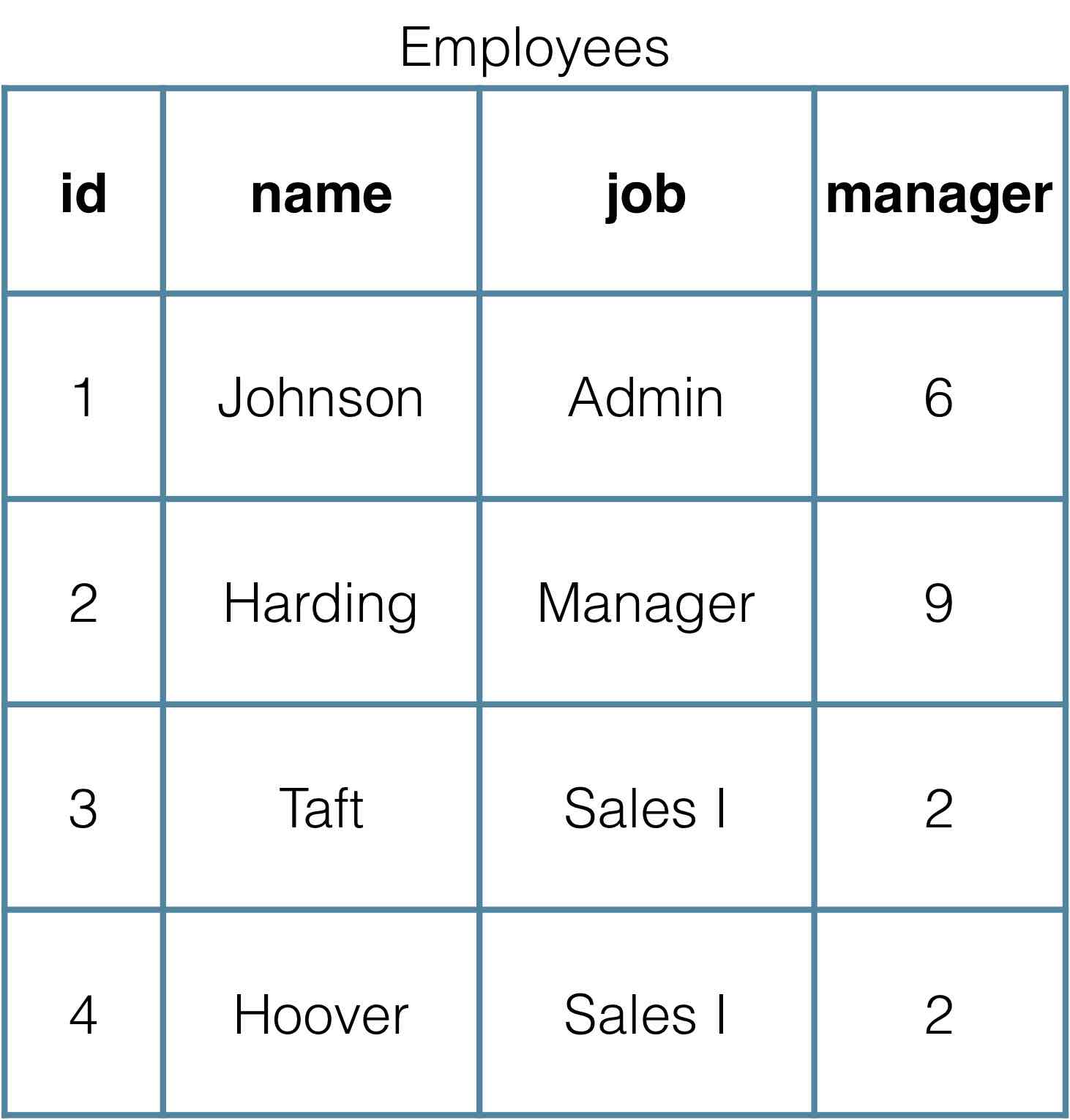Working with hierarchical tables
Introduction to Databases in Python

Jason Myers
Co-Author of Essential SQLAlchemy and Software Engineer
Hierarchical tables
- Contain a relationship with themselves
- Commonly found in:
- Organizational
- Geographic
- Network
- Graph
Hierarchical tables - example

Hierarchical tables - alias()
- Requires a way to view the table via multiple names
- Creates a unique reference that we can use
Querying hierarchical data
managers = employees.alias()stmt = select( [managers.columns.name.label('manager'), employees.columns.name.label('employee')])stmt = stmt.select_from(employees.join( managers, managers.columns.id == employees.columns.manager)stmt = stmt.order_by(managers.columns.name)print(connection.execute(stmt).fetchall())
[(u'FILLMORE', u'GRANT'),
(u'FILLMORE', u'ADAMS'),
(u'HARDING', u'TAFT'), ...
group_by and func
- It's important to target
group_by()at the right alias - Be careful with what you perform functions on
- If you don't find yourself using both the alias and the table name for a query, don't create the alias at all
Querying hierarchical data
managers = employees.alias()stmt = select([managers.columns.name, func.sum(employees.columns.sal)])stmt = stmt.select_from(employees.join( managers, managers.columns.id == employees.columns.manager)stmt = stmt.group_by(managers.columns.name) print(connection.execute(stmt).fetchall())
[(u'FILLMORE', Decimal('96000.00')),
(u'GARFIELD', Decimal('83500.00')),
(u'HARDING', Decimal('52000.00')),
(u'JACKSON', Decimal('197000.00'))]
Let's practice!
Introduction to Databases in Python

